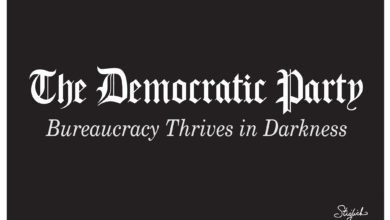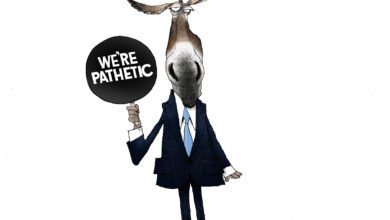The $2 Trillion Case for a Regulatory Budget

The federal government doesn’t merely spend nearly $7 trillion annually with debt approaching $40 trillion; it also directs the private sector to spend colossal sums and reallocate vast resources through regulations. Accordingly, the concept of a regulatory budget occasionally gains traction, sometimes appearing in House budget resolutions that include a Policy Statement on Government Deregulation.
At more than $2 trillion annually—coincidentally about equal to both individual income tax receipts and this year’s anticipated federal deficit—federal regulations now cost the average household over $16,000 per year, according to the 2025 edition of the Competitive Enterprise Institute’s Ten Thousand Commandments report.
Regulatory reform requires playing the long game. Its challenges are structural. Congress should act now, particularly with potentially tough midterm dynamics threatening the GOP’s majority.
The House Judiciary Committee’s portion of the budget reconciliation bill—marked up this week and headed to the Senate—presents a valuable opportunity to pass needed regulatory reforms. Reconciliation bills aren’t subject to the Senate filibuster and its 60-vote threshold, making them ideal vehicles for such measures.
The bill currently includes a version of the Regulations from the Executive In Need of Scrutiny (REINS) Act, structured to comply with Senate rules requiring reconciliation provisions to focus solely on fiscal matters.
If properly constructed, these REINS-like provisions—requiring congressional approval of certain major new regulations—could help prevent agencies from regulating beyond what Congress has authorized. Reinforcing the separation of powers is especially important in the current political climate.
The markup also includes a provision requiring agencies to submit some of their already existing rules for congressional approval, without which the rules terminate.
Another provision calls for the Government Accountability Office (GAO) to produce an aggregate estimate of regulatory costs. That provision points to the saliency of another reform with bipartisan roots: the aforementioned concept of a regulatory cost budget.
Before being featured in President Jimmy Carter’s 1980 Economic Report of the President, Democratic Sen. Lloyd Bentsen of Texas—who later served as Treasury Secretary in the Clinton administration—proposed in 1979 an “annual cap on the compliance costs each agency could impose on the private sector” to “make it possible to coordinate the regulatory and fiscal budgets.” This coordination matters because regulations influence macroeconomic variables, including government revenue, and might therefore merit explicit incorporation into reconciliation.
President Trump implemented a version of a regulatory budget via executive order during his first term, introducing a “one-in, two-out” framework. When agencies proposed a new significant regulation, they were required to eliminate at least two existing rules or guidance documents whose combined costs equaled or exceeded those of the new rule.
Joe Biden rescinded that order upon taking office. Trump then restored it in his second term—upping the ante to one-in, ten-out.
Whatever the count, federal agencies issue more than 3,000 rules in a typical year—these requirements effectively cap regulatory costs and can even guide reductions, as Trump has emphasized. The flaw, of course, is that executive orders can be undone by the next president. That’s why permanent congressional action is essential—and reconciliation presents one such chance.
The greatest burdens of the regulatory state stem from its suppression of economic productivity and high compliance costs—not just the budgetary costs of funding agencies. While federal regulatory compliance now exceeds $2 trillion annually, the on-budget federal payroll stands at less than $300 billion. Without a regulatory budget accompanying the fiscal one, it will remain difficult for reformers to identify and target the heaviest burdens.
A regulatory budget, paralleling the fiscal budget, would ideally require Congress to apportion a total cost cap among agencies based on factors like potential lives saved or other measurable benefits. Agencies would then prioritize regulations within that constraint. Poor performance could lead to reallocating squandered budget authority to more effective agencies.
But we don’t need to start with a full-blown system. An incremental approach—a legislative version of Trump’s in/out rule layered on top of GAO’s new cost estimate—would be the simplest and most actionable starting point.
Some basic machinery for a regulatory budget already exists. Within the Office of Management and Budget is the Office of Information and Regulatory Affairs, charged with perform cost-benefit analysis on new regulations. It currently does this for just a fraction of regulations. With additional resources and a narrowed focus on cost estimation, OIRA could lay the groundwork for a credible regulatory budget.
Of course, not all costs—especially subjective or indirect ones—can be perfectly quantified. But the sheer magnitude of regulatory impact justifies an earnest attempt to assess and track it. That regulatory costs rival a significant portion of total government spending is undeniable, and it makes the case for bipartisan scorekeeping.
Trump has already issued 142 executive orders in his current term, many aimed at reducing overregulation. Related initiatives like DOGE—the Department of Government Efficiency—also aim to pare back government. But executive initiatives face the problem of impermanence unless Congress steps in. DOGE is currently set to wind down by the time of the America 250 celebrations next year. So far, its sequence has been admirable, but the timing somewhat skewed: agency downsizing and termination must precede reductions in personnel and payroll for the latter to have any guaranteed effect.
Like taxes, regulations redistribute wealth. That’s why cautious experiments in congressional accountability for regulatory activity are not just warranted—they’re long overdue. Deregulatory stimulus would benefit the economy both in the short term and long run. But it must be done right—and Congress must lead. Reconciliation presents the most immediate opportunity.
Clyde Wayne Crews, Jr. is the author of Ten Thousand Commandments and Fred L. Smith Fellow in Regulatory Studies at the Competitive Enterprise Institute (CEI). Ryan Young is senior economist at CEI.
The views and opinions expressed in this commentary are those of the author and do not reflect the official position of the Daily Caller News Foundation.
Content created by The Daily Caller News Foundation is available without charge to any eligible news publisher that can provide a large audience. For licensing opportunities of our original content, please contact licensing@dailycallernewsfoundation.org
Agree/Disagree with the author(s)? Let them know in the comments below and be heard by 10’s of thousands of CDN readers each day!



